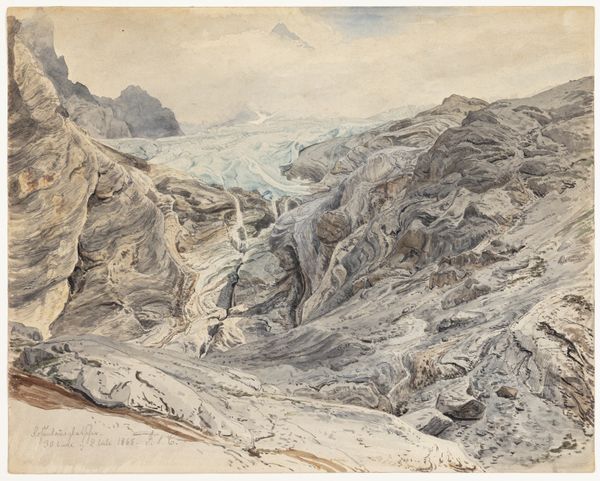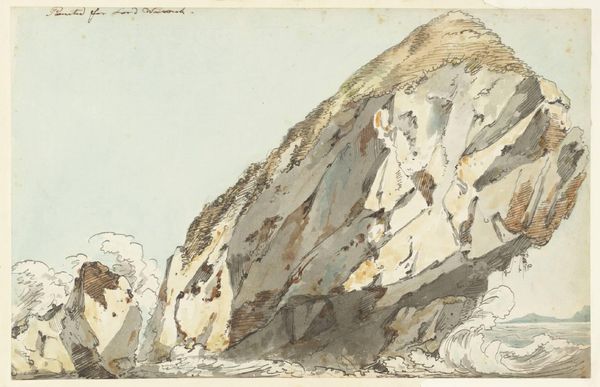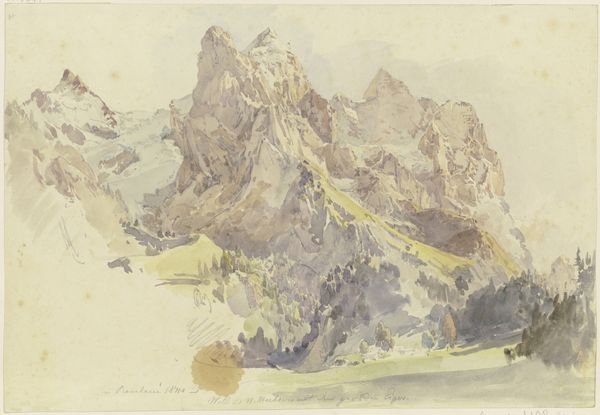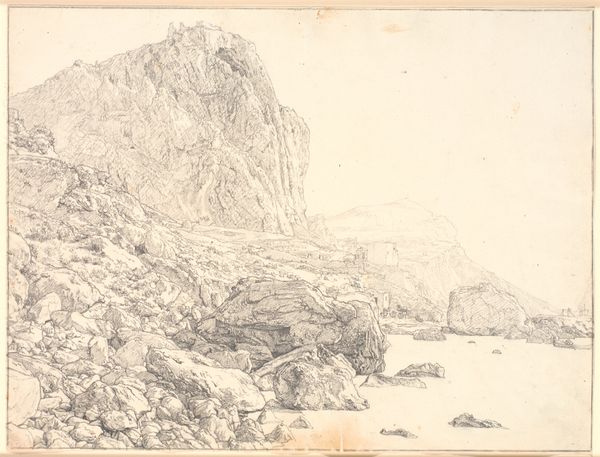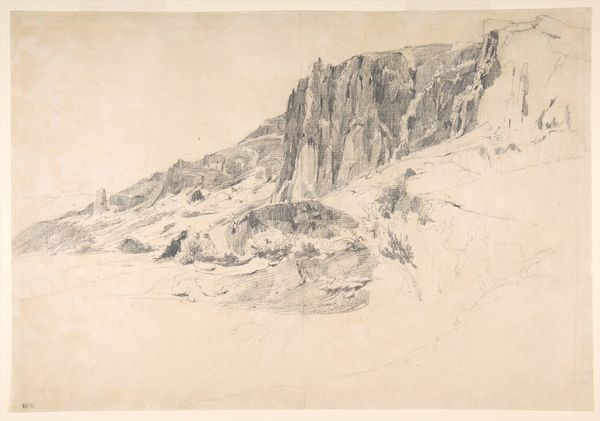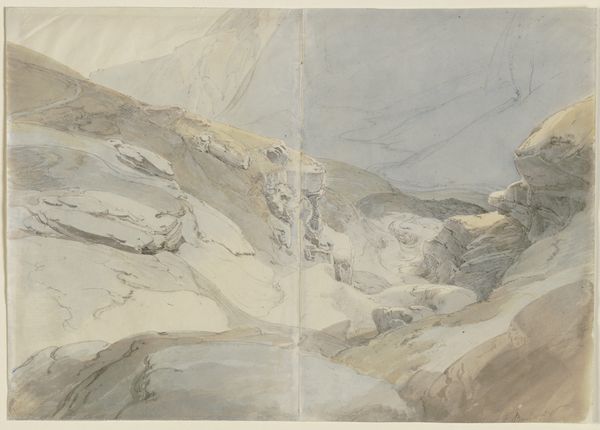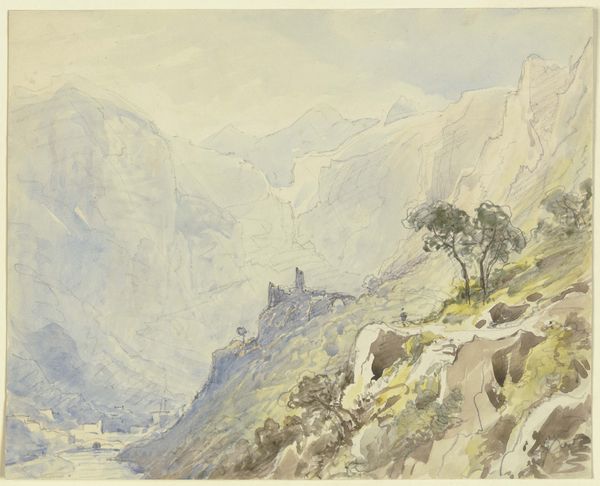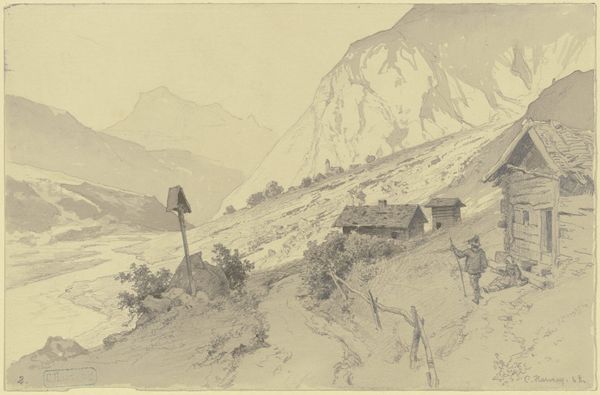
Mont Blanc Seen from the Massif, Les Aiguilles Rouges 1874
0:00
0:00
Dimensions: sheet: 11 7/16 x 26 1/8 in. (29 x 66.4 cm)
Copyright: Public Domain
Eugène-Emmanuel Viollet-le-Duc rendered this watercolor of Mont Blanc in the mid-19th century, capturing the majestic mountain range from Les Aiguilles Rouges. The imposing mountains serve as a powerful symbol of nature's sublime grandeur, a concept deeply rooted in Romanticism. Consider the mountain as a recurring motif throughout art history. In ancient mythologies, mountains were seen as sacred spaces, the dwelling places of gods. Think of Mount Olympus in Greek mythology. This idea evolved through the Renaissance and into the Romantic era, where mountains became emblematic of untamed nature and spiritual awakening. The sublime, a concept popularized by Edmund Burke, suggests that experiences of awe mixed with terror can elevate the soul. Viollet-le-Duc's depiction of Mont Blanc evokes this feeling, engaging viewers on a visceral level. As the Romantics believed, such encounters with nature can lead to profound psychological insights, stirring the collective memory. This is not merely a landscape, but a mirror reflecting our deepest fears and aspirations. Thus, the mountain endures, not just as a geographical feature, but as a potent symbol, constantly reshaped by the human psyche across time.
Comments
No comments
Be the first to comment and join the conversation on the ultimate creative platform.
